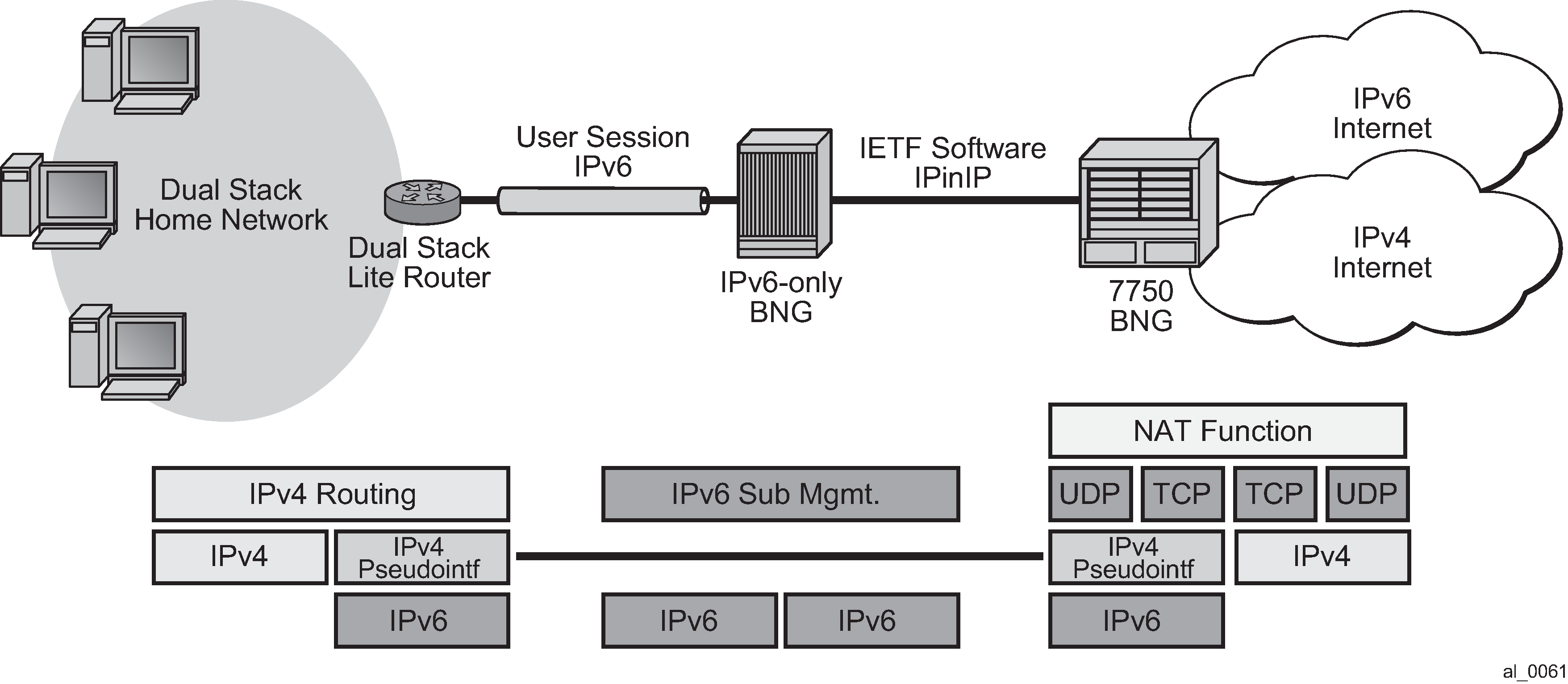As shown in Figure: IP-in-IP, IP-in-IP uses IP protocol 4 (IPv4) to encapsulate IPv4 traffic from the home network across an IPv6 access network. The IPv4 traffic tunneling is treated as best-effort with no subscriber management or policy, and does not use ESM. The scale is dependent only on the internal structures of the MS-ISA and CPM, that is, the IP-in-IP model can support more subscribers than an ESM-based approach.

DS-Lite IP-in-IP is configured through the existing nat command that is inside the CLI statements that are within the base router or VPRN. A service performing large scale NAT supports DS-Lite.
DS-Lite expects a routing (non-NATing) gateway in the home, where many different IPv4 inside addresses exist for each subscriber. These inside addresses may overlap other subscriber’s address, especially with the heavy use of RFC 1918 address space.
The lack of control of protocol for the IP-in-IP tunnels simplifies the functional model, because any received IPv4 packet to the ISA DS-Lite address can be:
checked for protocol 4 in the IPv6 header
checked that the embedded IP packet is IPv4
processed as if it were L2-Aware, where the source-IP of the tunnel (the source IPv6 address) is used as the subscriber identifier
Note that the inside IP address in the NAT, tables must not be the IPv6 address of the tunnel, but the true IPv4 address of any host within the home. The subscriber-id must be the literal IPv6 address (appreciating this may be 34 characters in length).